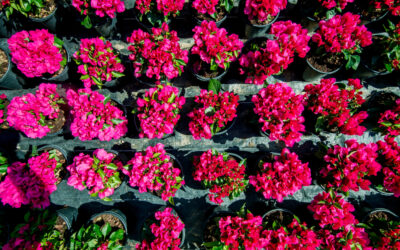Florida living goes hand in hand with beach going, sun loving, and citrus growing! Beltran’s Nursery and Landscape offers top quality citrus for purchase along with important information on choosing, planting, and maintaining fruit trees.
The first step in the journey to tasting and enjoying your own homegrown fresh fruit is to venture forth to a tree nursery like Beltran’s Nursery and Landscape. Our experts are happy to walk you through the process of selecting and purchasing a healthy tree.
 As you browse for the best citrus possible, evaluate the diameter of the tree trunks. Trees with diameters of about ½ inch offer the fastest acclimation after planting.
As you browse for the best citrus possible, evaluate the diameter of the tree trunks. Trees with diameters of about ½ inch offer the fastest acclimation after planting.
The trunks should also be straight. Crooked trunked trees are more vulnerable to falling over in high winds or under the weight of a heavy fruit crop.
Consider the height of branches as well. Low branches can by inconvenient during harvest and lawn care, not to mention making the fruit all too easy pickings for animals.
The tree you choose should have a uniform canopy with midway, clearly set leading branches.
Remember to check the roots of the citrus trees under consideration. They should be numerous, healthy, and damage-free.
Need-to-Know Planting Information
The process of planting your citrus tree can be one of the most critical moments in a tree’s life. Being careful to properly carry and plant your tree will start your tree’s new life off well.
During transport, you shouldn’t hold onto the trunk as a handle for carrying it. Carefully lower the tree into the hole before removing the tree from packaging.
Once your tree is planted, watering should follow immediately. This will activate the surface roots and protect the leaves from wilting. If you find that the roots are tangled and circular in growth, that means that they’re bound and need to be scored before planting to allow the water to permeate the root ball.
When planting, the top surface of the root ball should remain exposed. This soil includes special nutrients and soil to absorb water well.
The hole that you plant your tree in should be no deeper than the height of the roots, but it can be a bit wider.
After placing the root ball, backfill with native soil, being careful to loosen up any clods. You can address any nutritional remediation that’s needed at this point. If you want to use fertilizer at this point, be careful and use only organic fertilizing materials; avoid any commercial fertilizer.
In fact, it’s best to apply compost and mulch around the trees rather than mixing it with backfilled dirt.
Inside the hole, create a cone for placing the roots, fanning them out within it. Then add soil, tamping gently. Placement should be high to account for inevitable settling, and you can use the darker color of the trunk to indicate the initial soil level.
After your initial thorough watering, make sure to keep the soil moist but never soggy. You can check by using a probe or your finger to establish moisture or dryness.
Once your tree has grown half a foot in its new home, you should begin applying fertilizer. Three applications a year, during the growing season, of citrus fertilizer will help your tree thrive.
Florida homes and businesses can benefit from the addition of fruit trees, but purchasing and planting fruit trees can be overwhelming for the average property owner. Call 239-362-4327 to discover how Beltran’s Nursery and Landscape can help with every step in the process from finding the best specimen to professional transportation and planting.







